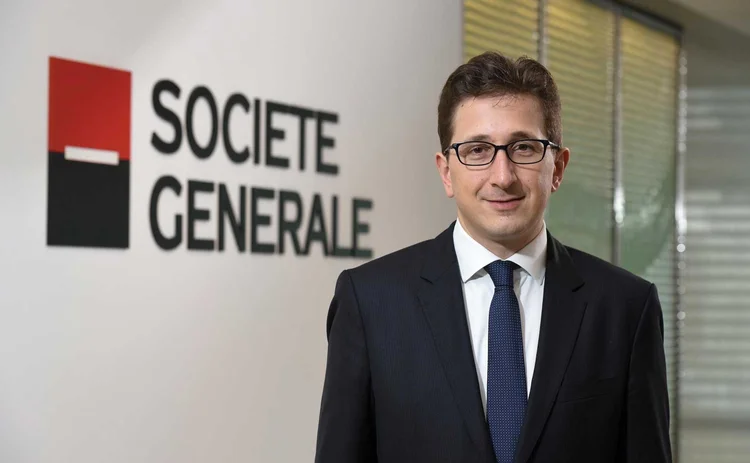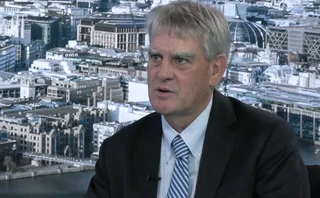
Structured products house of the year: Societe Generale
Asia Risk Awards 2018

The Asian structured products market is volume-driven. To succeed, banks need to constantly formulate structures and generate payoffs matching client demand.
Societe Generale, which has built a reputation for its structured equity investment solutions, has expanded its offering to other asset classes, building successful solutions in equities, rates, commodities and foreign exchange over the past year. These products have contributed to a 10% increase in revenue from the structured products franchise in the region over the past 12 months.
The originate-to-distribute model followed by Societe Generale has been bolstered by enhanced risk recycling and the launch of digital trading and automation tools for clients that have boosted volumes, risk management and cut transaction times. The bank also extended its structured products network into Thailand and Australia in 2017, to ensure a presence in all the key derivatives markets in the Asia-Pacific region.
“Asia is different from the rest of the world in that it is very volume-driven,” says Jerome Niddam, head of global markets for Asia-Pacific at Societe Generale. “You need a factory to run the structured products business here, one which is state of the art. We are always at the forefront and have a local presence in all major markets. The most recent additions are Thailand and Australia.”
The bank has established a local sales team in Australia, offering products linked to mutual funds and autocall structures in a country thirsty for yield amid record low interest rates. The bank now offers clients index-linked and commodities-linked solutions in Thailand.
Another key to success in Asia is the ability to constantly offer small tweaks to structures and payoffs and periodically come up with pioneering solutions, says Jerome.
An example is Fixed Index Annuity (FIA) products. Leveraging on its knowledge of long-term savings products in Japan, the bank closed its first FIA transaction with a Japanese client. Fixed index annuities allow policy-holders to benefit from the potential market upside while mitigating any market downturns, thus allowing insurers to reduce their asset liability mismatch.
The multi-year product is a single premium product denominated in Australian dollars or US dollars, where the policy-holder has the option to either receive a guaranteed yield or purchase a customised index call spread. The index offers a multi asset exposure (equity, bonds, commodities and real estate) with a volatility control mechanism that allows Societe Generale to offer competitive pricing to the insurance company.
You need a factory to run the structured products business here, one which is state of the art
Jerome Niddam, Societe Generale
Across the spectrum in commodities, the bank came up with a product aimed at capturing the electronic vehicle (EV) revolution by structuring the first proprietary index linked to the trend for EVs. The index, developed last year at the behest of a corporate client, targets a long-term investment trend.
The index tracks a basket composed of nickel, copper, aluminum, zinc, palladium and platinum. While EV demand currently makes up just 3% of nickel demand, that figure is projected to surge to a fifth in coming years, and the price of the metal will be driven by the success of EVs, according to the bank.
The bank also offers a 10-year capital-guaranteed note linked to the EV index. The note carries a 3% coupon in the first year, along with a participation coupon linked to the index’s performance that year. Investors can redeem the notes, which have annual observation dates, if the index overperforms by at least 25% after the strike date.
Societe Generale has also created sharia-compliant structures with exposure to the Chinese capital markets, after a South-east Asian client sought such a product.
The bank has made inroads into the alternative risk premia space, which is seeing increased penetration among institutional investors in the region. With returns from fundamental investing diminishing, money managers are leaning on factors such as carry, momentum and volatility over price, across asset classes to beat the street. In September last year, the bank hired a senior quantitative researcher to head the team in Asia-Pacific.
Recycling risk
Central to the bank’s strong performance over the past year has been its ability to recycle risk. For example, it identified a solution that allowed it to provide financing to a Chinese corporate in the absence of a liquid credit default swap market. The illiquid loan risk was repackaged into the securitised format of credit-linked notes or a credit-linked loan, before being sold on to institutional investors in Taiwan and Hong Kong.
The continued automation of its structured product platform is another factor contributing to the success of the business. One main example is the global markets structured products platform introduced to its clients in the region last year.
The platform, which covers more than 1,800 underlying assets – including major US, Asian and European stocks, indexes, ETFs, commodities, currencies and credit – provides pricing and execution capabilities. Customisations were made to the European offering to account for Asia-specific product names and trade documentation.
“Turnover in Asia is pretty fast, and while small tweaks are easy to replicate, we stand out because we can launch a product very quickly,” says Niddam. “From concept to structuring to pricing, the timeline can be as short as two weeks, thanks in part to our automation initiatives. We never rely on one blockbuster product for the year, and instead look to develop a steady stream of structures through the year so that despite market fluctuations we have steady flows.”
Only users who have a paid subscription or are part of a corporate subscription are able to print or copy content.
To access these options, along with all other subscription benefits, please contact info@risk.net or view our subscription options here: http://subscriptions.risk.net/subscribe
You are currently unable to print this content. Please contact info@risk.net to find out more.
You are currently unable to copy this content. Please contact info@risk.net to find out more.
Copyright Infopro Digital Limited. All rights reserved.
As outlined in our terms and conditions, https://www.infopro-digital.com/terms-and-conditions/subscriptions/ (point 2.4), printing is limited to a single copy.
If you would like to purchase additional rights please email info@risk.net
Copyright Infopro Digital Limited. All rights reserved.
You may share this content using our article tools. As outlined in our terms and conditions, https://www.infopro-digital.com/terms-and-conditions/subscriptions/ (clause 2.4), an Authorised User may only make one copy of the materials for their own personal use. You must also comply with the restrictions in clause 2.5.
If you would like to purchase additional rights please email info@risk.net
More on Awards
Collateral management and optimisation product of the year: CloudMargin
Delivering the modern blueprint for enterprise collateral resilience
Flow market-maker of the year: Citadel Securities
Risk Awards 2026: No financing; no long-dated swaps? “No distractions,” says Esposito
Pricing and analytics: fixed income – Quantifi
Quantifi delivers high-performance, transparent and adaptable pricing and risk analytics for fixed income and credit markets
Derivatives house of the year: Citi
Risk Awards 2026: Rev up, RWAs down, as US bank gets back on track (with added XiNG and XiP)
Technology vendor of the year: SS&C Algorithmics
Risk Awards 2026: From cloud, to chips, to maths tricks – vendor getting more out of existing tech
SS&C Algorithmics: winner’s interview with Curt Burmeister
SS&C Algorithmics wins three categories in this year’s Markets Technology Awards in addition to Technology vendor of the year at the Risk Awards
Best vendor for system support and implementation: Murex
Murex wins Best vendor for system support and implementation at the Markets Technology Awards 2026
Pricing and analytics: cross-asset and structured – Murex
Murex wins Pricing and analytics: cross-asset and structured at the Markets Technology Awards 2026 thanks to its MX.3 platform







